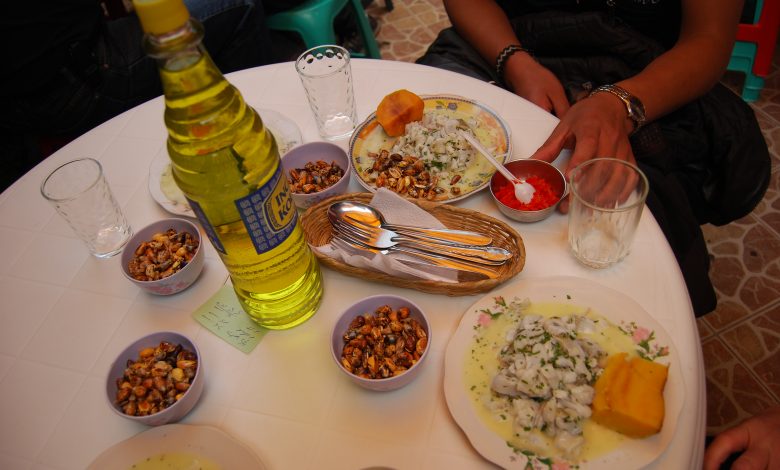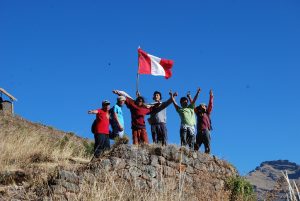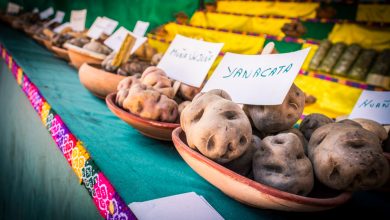Whether Flag or Signature Ceviche Means Much in Peru

Ceviche can be called Peru’s signature dish, like a flourish from a masterful hand that flows across the page and stands legally for that person and what she or he represents.
It is widely celebrated in the press as a pinnacle of Peruvian cuisine. Though simple, it requires much attention to detail in the selection of the right fish, and other ingredients, as well as care in the timing of submitting the fish to the fascinating tartness of Peruvian limes.
In Spanish a different metaphor is used to describe this food that has come to stand for the country. It is not considered the embellished writing of your name, but a flag, the bandera. In Peru they simply call it their plato bandera. As such, it is like the national flag, red and white, which they call a sacred symbol.
The flag is sacred in that it receives homage because it stands for the country, a large amalgamation of different regions and millions of people and because it is legislated as such. It is simply so much more than its elements, as a result. It is a manifestation that can reach out and re-present the country throughout the world.
Ceviche, to the degree people take seriously this comparison to the flag, is then also made more than its ingredients and more than a simple preparation to be placed on a table and enjoyed for lunch. It surpasses other foods from Peru and other concoctions of its amazing chefs and world recognized restaurants. It is Peru, and not simply something made by the people of Peru.

As a result, many people claim cebiche as they prefer to spell it (indeed that spelling is the most common in Spanish according to Google NGAM while the v spelling is by far the most common in English), is as native to Peru as potatoes and quinoa, or like the red and white that were sacred colors of the Inca it is claimed.

Yet there is a contrasting narrative that can also function for Peru where ceviche is a fusion of indigenous and foreign, the camote (sweet potato) and local fish with Spanish limes. Or, as a Peruvian historian who looks at Arabic culture in Peru, Juan Jose Vega, argues, Ceviche stems from the Arabic world that came with the Spanish.
Linguist Dan Jurafsky, in his recent book The Language of Food, argues that it shares those roots, that ultimately are not just Arabic but go back to the royal kitchens of classical Persia, with other signature foods such as Fish and Chips for England and Tempura for Japan. Jurafsky claims all three stem from the same original food called sikbaj.
The story is long and complicated, and along the way he notes how Peruvians have long been part of California, especially San Francisco. The connection is strong historically, going to before the Americans came to the Bay Area.
Along the way, Jurafsky leaves his readers fascinated with this royal Persian dish that has so many children in the modern world that have done well.
They, like royal families transplanted to new domains, have become symbols of those places and exercise a role that would make them seem more indigenous than the natives of each place. We can argue that may have much to do with the historically recent organization of nation states and their need for symbols, especially flags and now foods that are modern and global and yet can stand for the ancient depth of each country.




